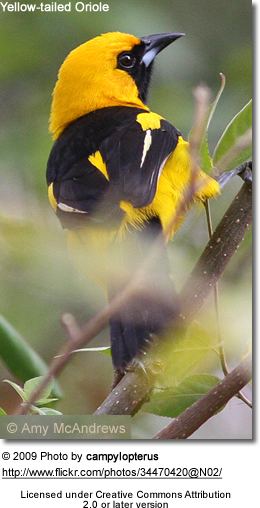Order Passeriformes Genus Icterus | Phylum Chordata Scientific name Icterus mesomelas Rank Species | |
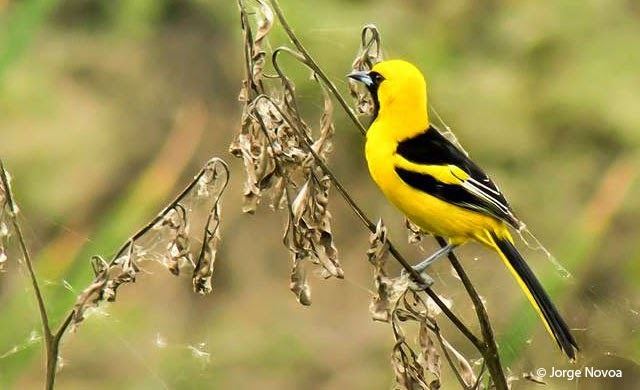 | ||
Similar New World oriole, Bird, Yellow‑backed oriole, White‑edged oriole, Black‑cowled oriole | ||
Yellow tailed oriole minca www ecoturs org
The yellow-tailed oriole (Icterus mesomelas) is a passerine bird in the New World family Icteridae. It breeds from southern Mexico to western Peru and northwestern Venezuela; in Peru it also lives in a river valley corridor.
Contents
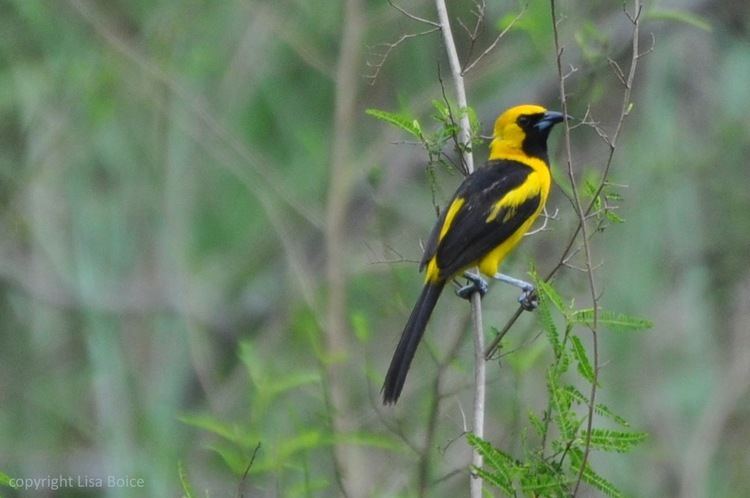
The yellow-tailed oriole is 22–23 cm (8.7–9.1 in) long and weighs 70 g (2.5 oz). It is mainly yellow with a black back, lower face and upper breast. The wings are black with yellow epaulets. The tail, seen from above, is black with yellow margins; from below, it appears almost entirely yellow. This is the only oriole with prominent yellow in the tail, hence the species’ name. The sexes are similar, but young birds have the black on the back and tail replaced with olive-green.
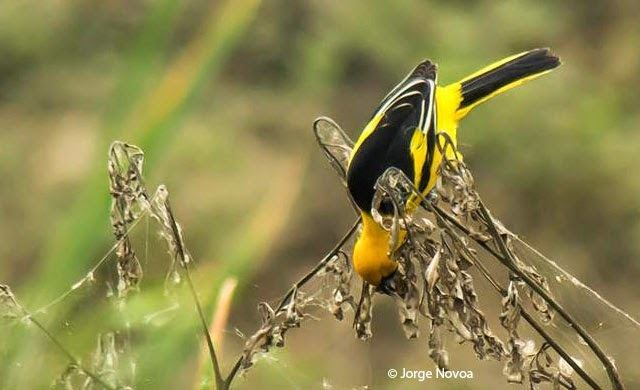
There are four subspecies:
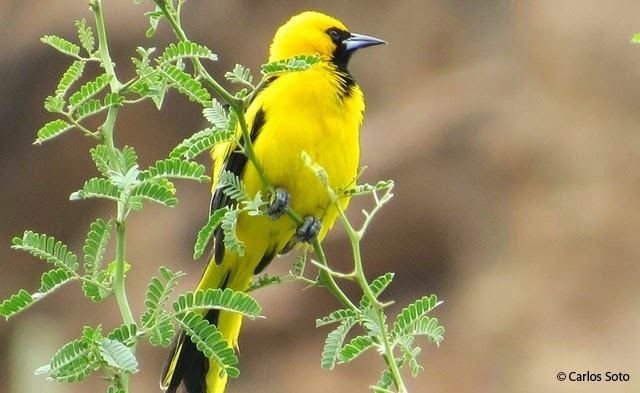
The calls of this species include a chick and a weechaw. The song is a melodic repetition of rich whistles, chuck, chuck-yeeaow. It is often given as a duet, with the female’s response following or overlapping the male’s longer phrases.
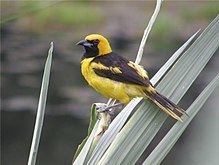
This large oriole inhabits dense thickets, often with vines, Heliconias and similar dense growths, in swampy lowlands. The birds forage in pairs or small groups in denser vegetation than most orioles, mainly feeding on insects, although they will also take nectar and certain fruits such as gumbo-limbo (Bursera simaruba).
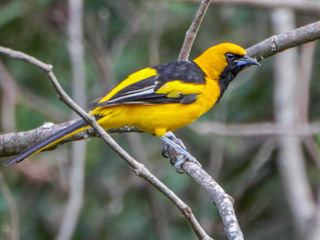
It builds a deep but thin cup nest 2 m (6.6 ft) high in a thorny scrub by a stream. It lays three dark-blotched white eggs, which hatch in 13 days with a further 14 days to fledging.
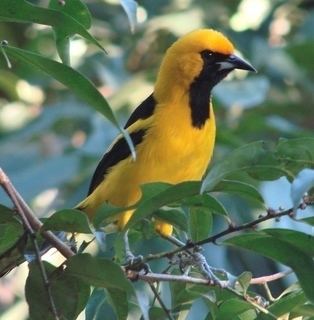
The yellow-tailed oriole is fairly common except in Peru and Venezuela, but is reducing in numbers in parts of its range because of persecution by the cage-bird trade; this species is valued for both its appearance and its beautiful song.
